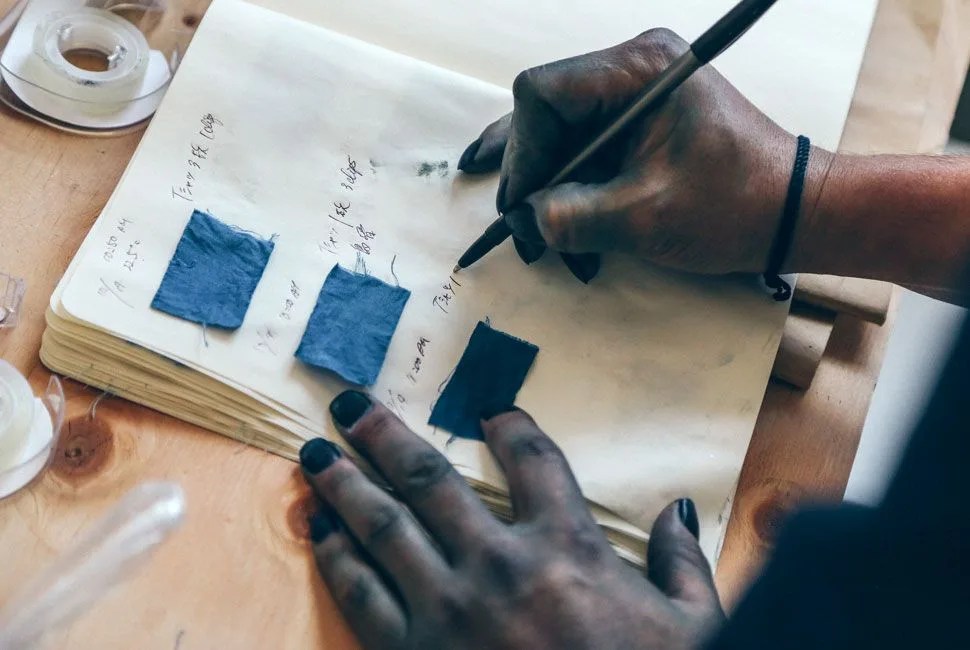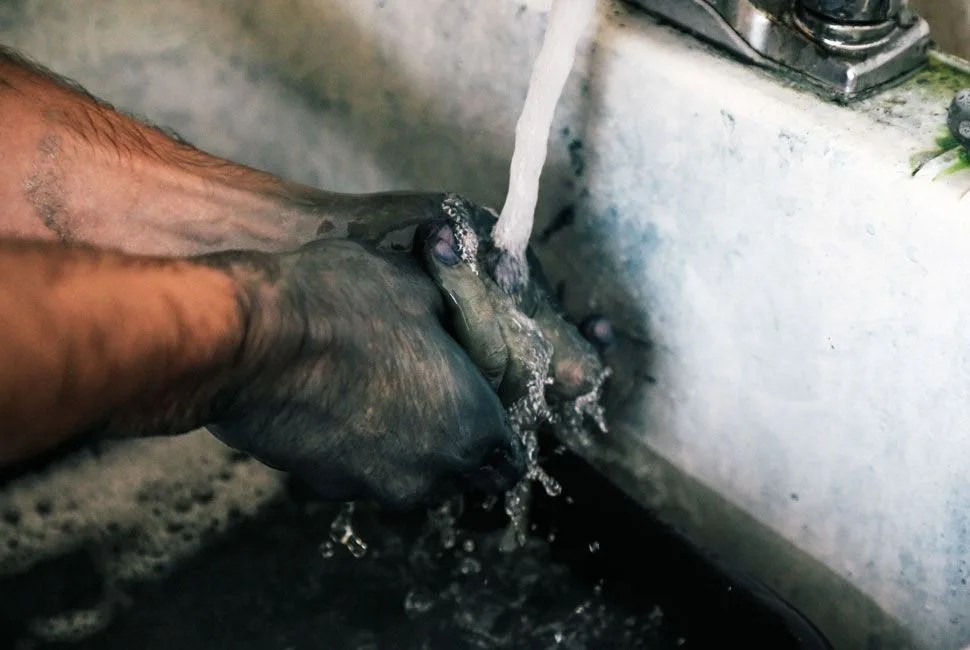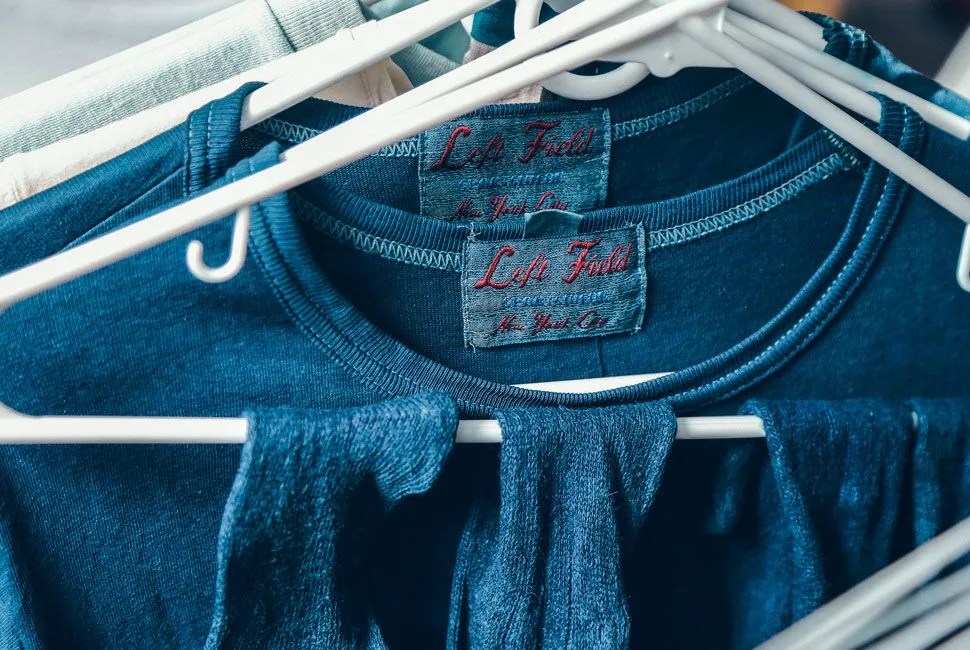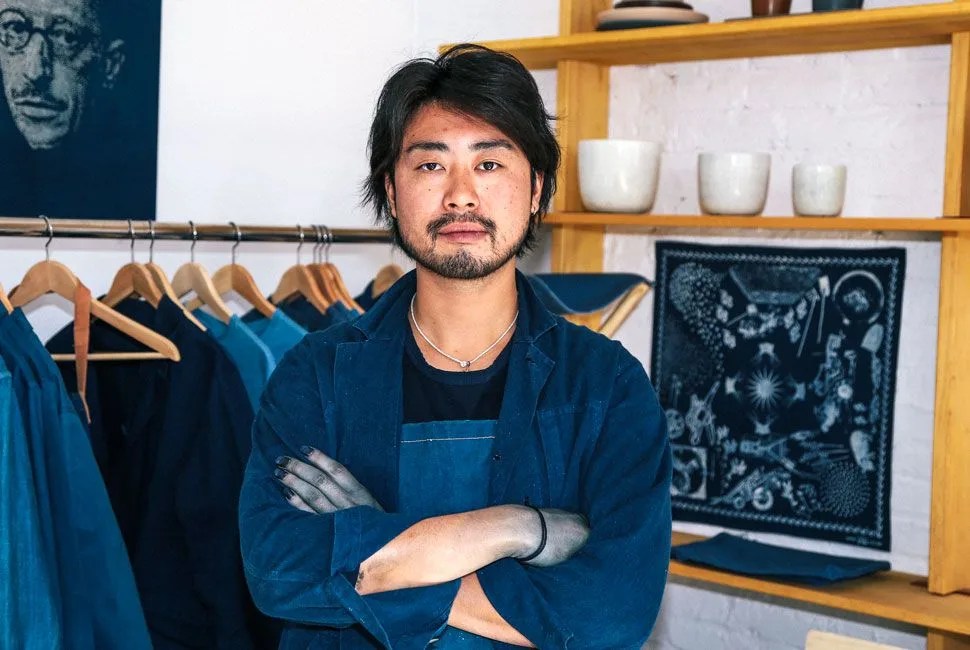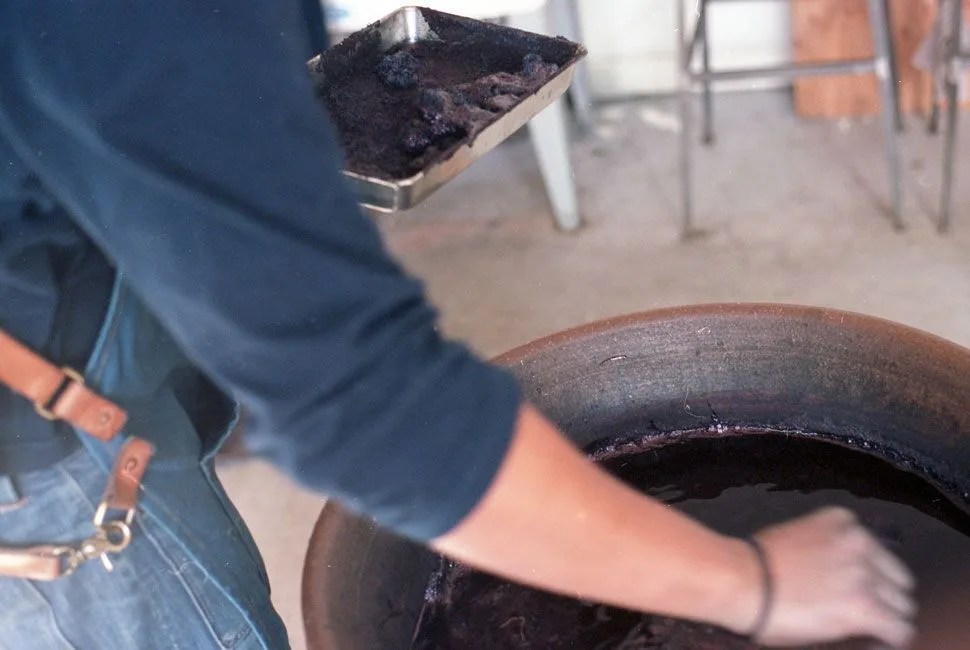22 photos
The first thing I notice when meeting Kenta Watanabe is the color of his hands: blue. My naïve impression is that this is a style choice, one to match his jeans, apron, jacket, even his watch. It quickly becomes apparent during an hour-long workshop at the Brooklyn outpost of Buaisou, a traditional indigo-dyeing collective cofounded by Watanabe in Japan, that Watanabe’s hands are symbolic of a decision much more profound. Call it a long-term life choice.
Born in Yamagata, Japan, the 29-year-old Watanabe still considers himself young as far as traditional indigo craftsmen are concerned. Four years ago, he was a “salaryman,” a member of Japan’s corporate working class; the job itself, he suggests, is irrelevant. Searching for a hobby, he went to an indigo workshop, a practice, originating in India, that has been cultivated in Japan since the 10th century and that was once used to color kimonos. He was taken with the transformation of fabrics. “I was fascinated by the way the indigo changes the color when you take it out of the vat,” he says. He’s describing the oxidation that happens when a garment, dipped in natural indigo dye called sukumo (a compost made from Polygonum leaves), spontaneously changes from green to blue when exposed to air.
Watanabe decided to pursue the craft professionally, but quickly realized there was a limited number of jobs available for newcomers to traditional methods of indigo dyeing; the economic importance for this kind of folk craft has dwindled considerably under industrialization. “Two-hundred years ago, there around 1,800 sukumo farmers in Japan,” mostly in the Tokushima Prefecture of Shikoku, Japan’s historical center of indigo farming, says Watanabe. “Today, there are only six.”
Buaisou is the sixth. It exists because, culturally, the craft still holds some weight. Japan’s Ministry of Education, the country’s most important patronage of the arts, considers indigo dyeing “intangible cultural property.” In 2014, a public-sanctioned project in Kamiita-cho, Tokushima, was searching for two young individuals willing to relocate to Tokushima and carry on the craft. Watanabe applied, along with his future partner Kakuo Kaji, who has a history in textile design in Tokyo. Together, the pair founded Buaisou, and both Watanbae and Kaji began studying indigo farming under a sixth-generation sukumo farmer named Osamu Nii.
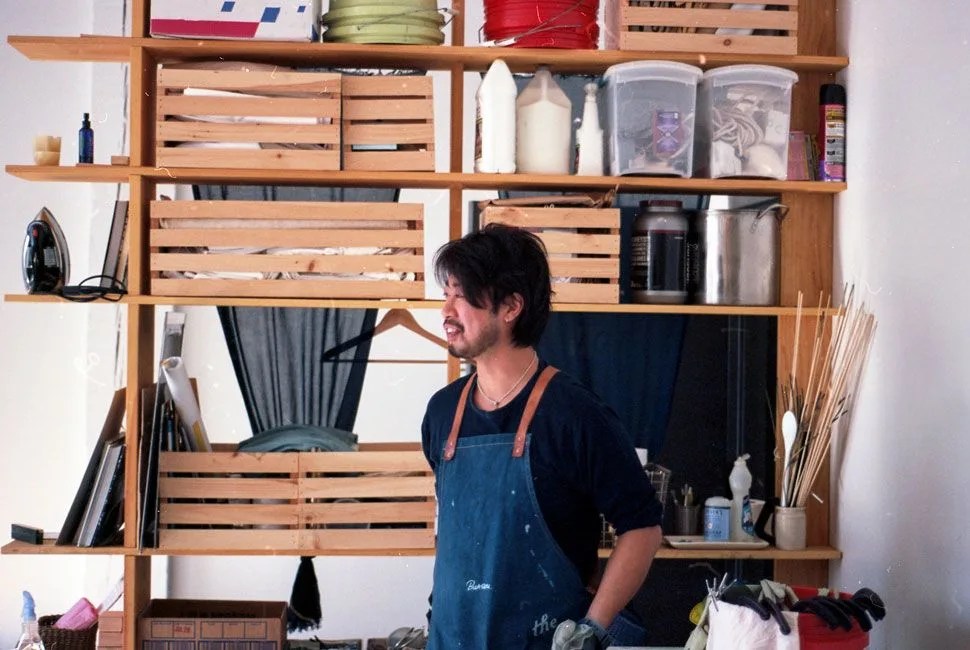
The idea for a Brooklyn outpost of Buaisou came shortly after their home base was settled in Japan. Watanabe and Kaji came to New York in 2014 to host a workshop in a friend’s living room. It was huge success, says Watanabe, with close to 100 attendees over the course of two days. “We thought, ‘maybe this could be something more permanent.’” In May of 2015, Buaisou nestled into a small, first-floor studio in Bushwick, Brooklyn, several blocks from the Morgan L stop, where the collective hosts a series of indigo-dying workshops and also distributes its handmade goods, from homewares to hemp bracelets, which can now be found in the gift shops of both the Noguchi Museum and the Cooper-Hewitt Design Museum. Bauisou is also commissioned by fashion labels, such as Left Field and the Hill-Side, to dye fabric that makes its way into high-end menswear.









